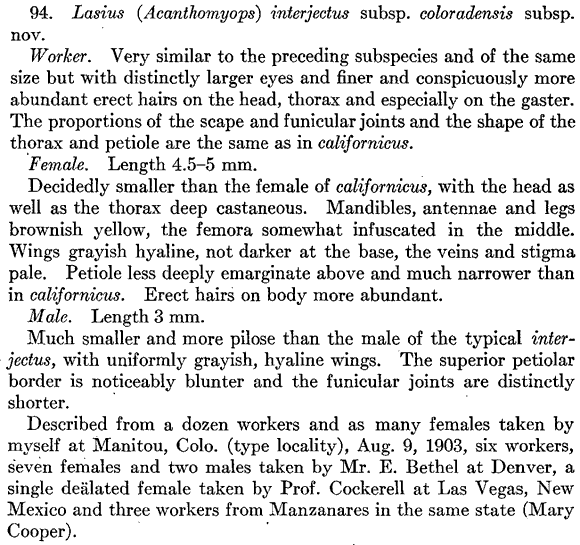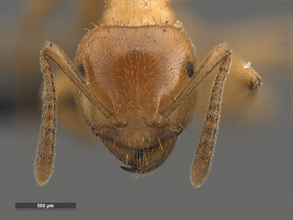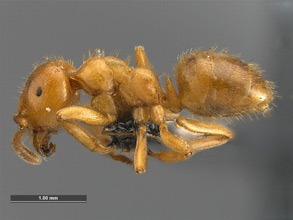- Identification
- Small yellow or yellowish-brown workers. Their 12 segmented antenna, small size, subterranean habits, small eyes, pale color and short 3 segmented maxillary palps collectively separate this species from other Formicinae. The latter character also differentiates this species from other co-occurring Navajo Reservation Lasius.
- Biology
- A soil nesting species that often has nest chambers underneath a stone. They commonly occur in grasslands and open woodlands. These small, pale colored ants, like other species in the subgenus Acanthomyops, live a subterranean existence. While not much is known about their biology they forage underground, including tending root aphids and coccids. Queens of other Acanthomyops found new nests by invading colonies of other Lasius species. Successful Lasius coloradensis queens then somehow kill the resident queen of the colony they are able to enter. The workers then care for the brood of the invading queen and are gradually replaced by workers of the heterospecific queen they allowed to infiltrate their colony.
- Distribution
- Range
- United States and Canada. New Mexico, Colorado, and Utah north to Manitoba and west to Alberta and Oregon.
- Navajo Reservation Records
- Samples being processed.
- Etymology
- Geographic. Named after the state where the types were collected.

- Literature
- Wheeler, W. M. 1917. The mountain ants of western North America. Proceedings of the American Academy of Arts and Sciences. 52:457-569.
- Wing, M. W. 1968. Taxonomic revision of the Nearctic genus Acanthomyops (Hymenoptera: Formicidae). Cornell University, New York State College of Agriculture, Agricultural Experiment Station, Ithaca, NY, Memoir No. 405.
- A note about these publications. The literature cited here is not meant to be an exhaustive list of papers published about this species.
Page authored by David Lubertazzi and Gary Alpert


